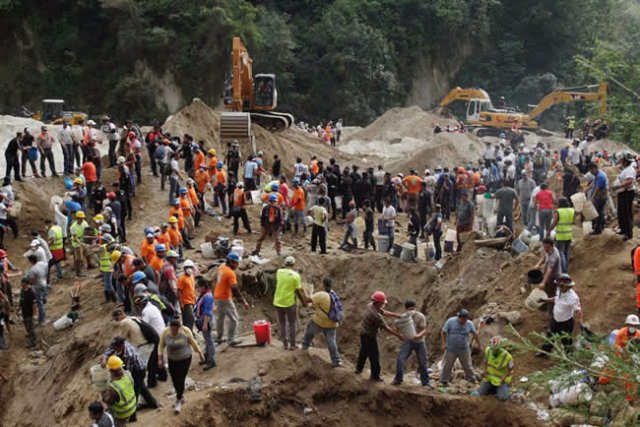
Rescue personnel had discovered 499 dead bodies as of August 20, since a devastating landslide hit near the Sierra Leone capital Freetown on August 14, the city's chief coroner said. Humanitarian groups say that more than 600 people remain missing.
The worst flood-related tragedy Africa has seen in years occurred when the side of Mount Sugar Loaf collapsed after heavy rain. It buried parts of the mountainous suburbs of Regent town, overwhelming relief efforts in one of the world’s poorest countries.
Meanwhile, authorities told residents living on a nearby hillside in Freetown to leave after a large crack developed.
Critics have blamed the disaster on the unplanned and haphazard development of the area, which is located in the Western Area Forest Reserve, due to actions of the country’s former colonial rulers and years of corruption by local political elites.
The lush rainforests that once covered the mountain were cleared by British colonial authorities seeking exclusive housing developments for Europeans during the turn of the 20th century. Since then, the area has been covered in pavement and housing as the country’s elites, as well as refugees from the civil war of the 1990s, populated the area, degrading the environment.
Authorities ignored urgent warnings from conservationists to return the mountain to its original state.
Author Lansana Gberie wrote in the New York Times: “Since some of the Sierra Leone’s most powerful political figures were culpable in the degradation, the dire warnings by the country’s environmentalists were guaranteed to go unheeded by the government.”
Authorities buried 461 bodies in hastily-dug graves in the nearby Waterloo Cemetery, near the site of a mass burial for victims of the Ebola crisis that killed 4000 people in the former British colony between 2014 and 2016.
Emergency personnel claim that many of the bodies were found decomposed under collapsed buildings or in drainage and families were not allowed to identify them prior to their burial.
“The only machinery we have at the recovery site are eight excavators,” said Colonel Abu Bakarr Sidique Bah, who is leading the search, adding that the steep and muddy terrain was making it hard to operate the machines. We do not have helicopters or sniffer dogs or trained forensic experts to do the work.
“We are currently making do with what is available by using our bare hands and shovels to dig up the rubble in search of dead bodies in areas the excavators are not able to operate.”
Authorities are concentrating on recovering bodies to prevent the fluids of contaminated corpses from seeping down from the wet mud into the water supply and spreading disease throughout the area of Freetown, which 1.2 million residents call home.
“We are doing all we can to ensure cholera does not break out,” said Samuel Turay, an official at the health ministry.
The threat of deadly landslides is growing in west and central Africa as rainfall and deforestation rise along with unplanned development and rapid population growth, experts say. Flooding is an annual threat in Sierra Leone, where rickety homes are regularly swept away by seasonal rains.
On August 17, a landslide in remote eastern Congo crushed the mud houses of a lakeside fishing village, potentially killing more than 200 people, a local official told Reuters.
Britain, the former colonial ruler of Sierra Leone, has only pledged US$6.5 million in aid.
[Abridged from TeleSUR English.]